Introduction
Troy instantly evokes epic tales of love, war, and heroism. For centuries, this ancient city was considered a myth, its existence confined to the verses of Homer’s epics. But as archaeology advanced, Troy transformed from legend to a tangible place rooted in the soil of modern-day Turkey. Today, it stands as a powerful symbol of where mythology meets historical fact.
This comprehensive guide explores Troy’s mythical origins, archaeological revelations, and lasting cultural impact. Whether you’re a history lover, a traveler, or someone enchanted by ancient stories, the tale of Troy offers a captivating journey.
The Mythological Roots of Troy
Troy’s legendary status largely stems from Homer’s epics, particularly The Iliad and The Odyssey, which have shaped the foundations of Western literature.
The Trojan War in Myth
According to Greek mythology, the Trojan War began after Paris, a prince of Troy, abducted Helen, the wife of King Menelaus of Sparta. This act triggered a massive military expedition by the Greeks to retrieve her, culminating in a brutal ten-year war.
Central Figures in the Tale:
-
Helen:
-
Revered as the most beautiful woman in the world.
-
Paris:
-
The prince whose fateful decision sparked the war.
-
Achilles:
-
The nearly invincible Greek warrior with one fatal weakness.
-
Hector:
-
Troy’s noble defender and Paris’s brother.
-
Odysseus:
-
Mastermind behind the Greeks’ final deceptive victory.
The war famously ended with the use of the Trojan Horse, a wooden structure hiding Greek soldiers who emerged at night to open the city gates for their army. Though the details are shrouded in legend, the story’s emotional and moral depth continues to resonate.
The Archaeological Pursuit of Troy
For centuries, Troy was seen as fiction. However, in the 19th century, a determined German archaeologist named Heinrich Schliemann believed otherwise. Convinced of Troy’s historicity, he set out to locate it using clues from Homer’s texts.
The Discovery at Hisarlik
In 1870, Schliemann began excavating a hill called Hisarlik in northwestern Turkey. His findings were groundbreaking. He unearthed remnants of a large ancient city, giving credence to the idea that Troy was not just a story but a real place.
Although his methods damaged some historical layers, Schliemann’s work sparked intense global interest. Subsequent archaeologists, like Wilhelm Dörpfeld and Manfred Korfmann, carried out more careful and methodical studies, establishing the historical layers of the ancient city.
Today, most scholars believe that one of the settlement layers—likely Troy VIIa—could be linked to a real conflict that inspired Homer’s epic.
Geographic Location
The ruins of ancient Troy are situated in northwestern Turkey, near the Dardanelles Strait, within the Çanakkale Province. The modern name of the site is Hisarlik, and it lies not far from the Aegean Sea.
Strategic Importance
Troy’s location was ideal for ancient civilizations. It controlled access to crucial trade routes between Asia and Europe. Sitting near fertile plains and surrounded by rolling hills, it also had the agricultural potential to support a sizable population.
Its position made it a coveted site for various empires and kingdoms. Controlling Troy meant dominance over key maritime and land-based commerce routes.
What Excavations Revealed
The archaeological digs at Hisarlik revealed nine major layers of settlement, named Troy I through Troy IX, each representing different historical eras.
Major Discoveries
-
Fortified Walls:
-
Evidence of defensive architecture, especially prominent in Troy VI and VII.
-
City Gates and Towers:
-
Some scholars associate these with locations mentioned in Homer’s Iliad.
-
Residential and Storage Buildings:
-
Providing insight into domestic life and urban planning.
-
Artifacts:
-
Tools, pottery, and figurines that reflect daily routines and trade practices.
-
“Priam’s Treasure”:
-
A collection of valuable items unearthed by Schliemann, controversially linked to Troy’s last king, though their origin and date remain disputed.
Modern Techniques
Advancements in geophysics, carbon dating, and 3D modeling have deepened our understanding of Troy. Researchers now use technology to map subsurface features, assess construction methods, and identify cultural influences.
The ongoing excavation and preservation of the site allow historians to reinterpret ancient texts through the lens of physical evidence.
Troy in the Modern Imagination
The legend of Troy has permeated global culture for centuries. From ancient Roman texts to 21st-century cinema, it continues to inspire and captivate.
Film and Media
The 2004 film “Troy”, featuring Brad Pitt as Achilles and Eric Bana as Hector, reintroduced the story to a global audience. Though the movie diverged from classical accounts, it renewed interest in both the myth and the archaeological site.
Literature and Arts
Authors like Virgil, Euripides, and Shakespeare have woven the tale into their works. Modern historical novels and plays continue to reimagine Troy’s saga, focusing on themes of honor, fate, and human conflict.
Global Symbolism
Troy has become a metaphor for lost glory, tragic love, and the fine line between truth and myth. Its story resonates with anyone who appreciates the complexity of human nature and the fragility of civilizations.
Touring the Ancient Ruins of Troy
Today, the ancient city is a designated UNESCO World Heritage Site, welcoming thousands of visitors each year. A journey to Troy offers a unique blend of mythological allure and archaeological wonder.
Key Sites to Explore
-
City Walls:
-
Massive stone structures were built for protection.
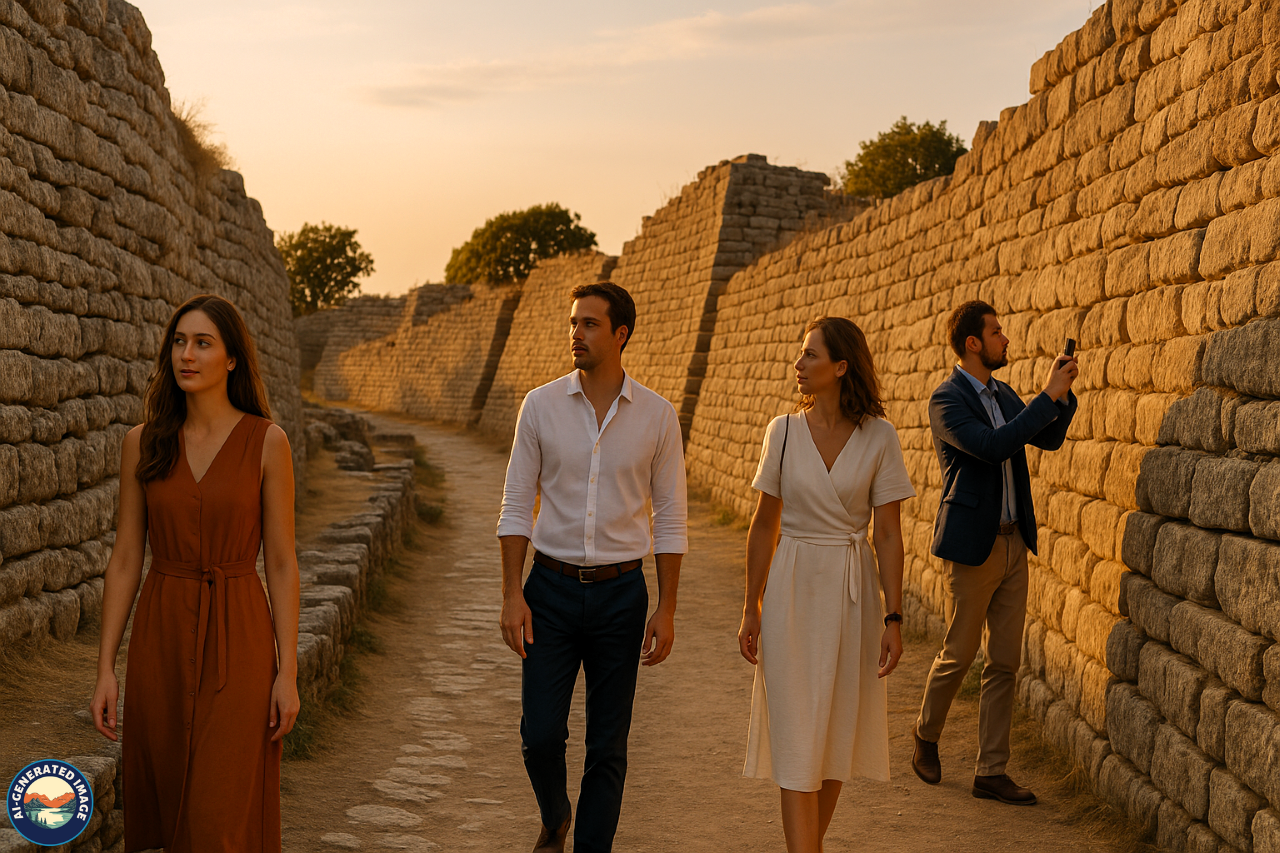
-
The Amphitheater:
-
A Roman addition reflecting later cultural influences.
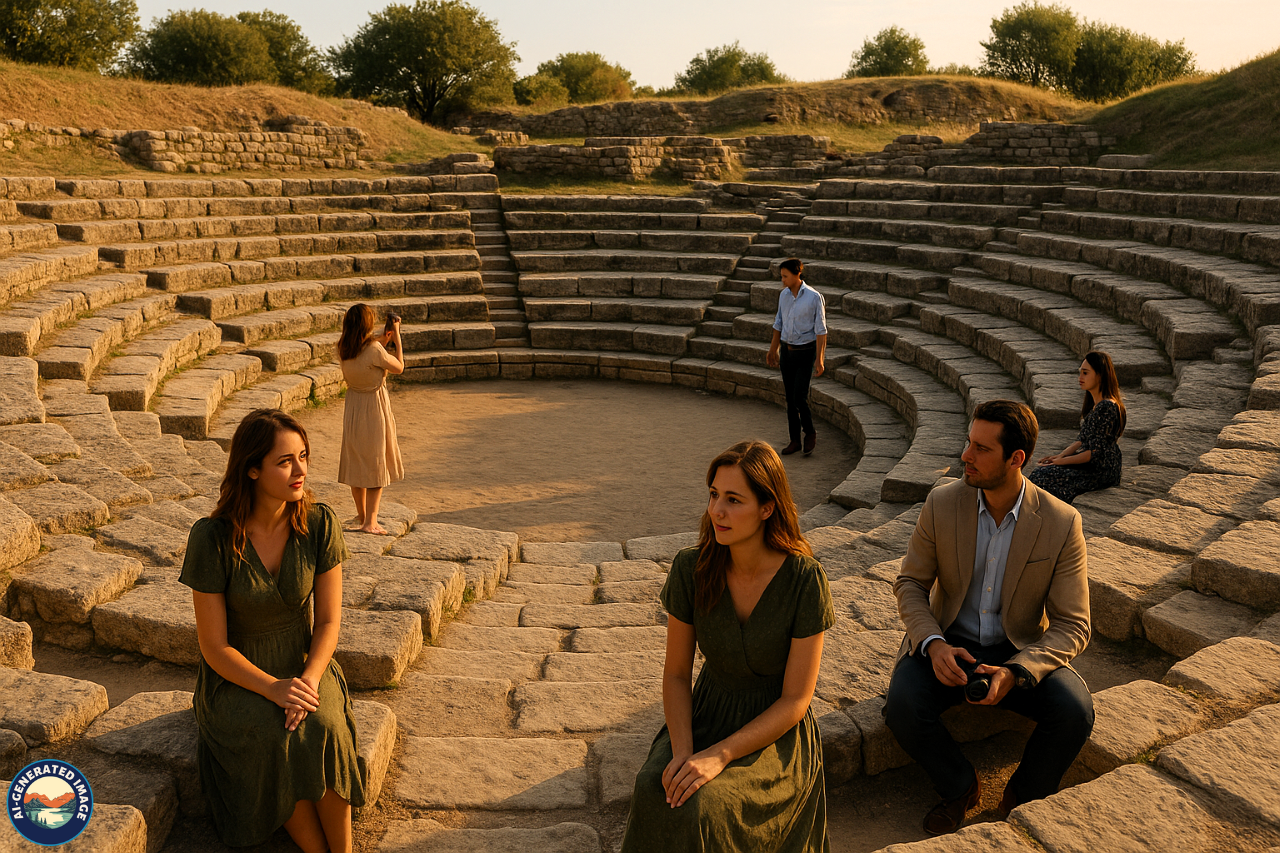
-
Stone Houses:
-
Foundations of dwellings from multiple eras.
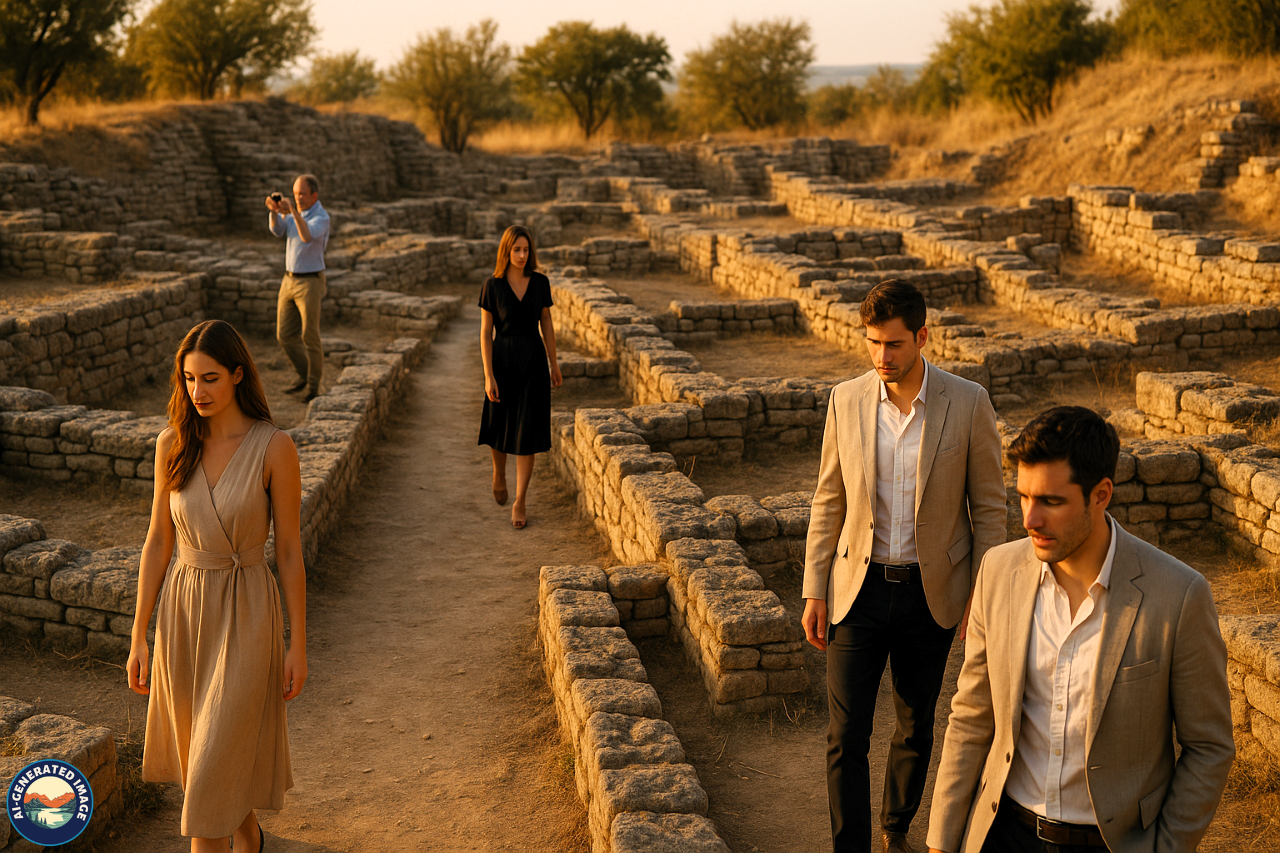
-
The Wooden Horse Replica:
-
A full-scale model for visitors to explore.
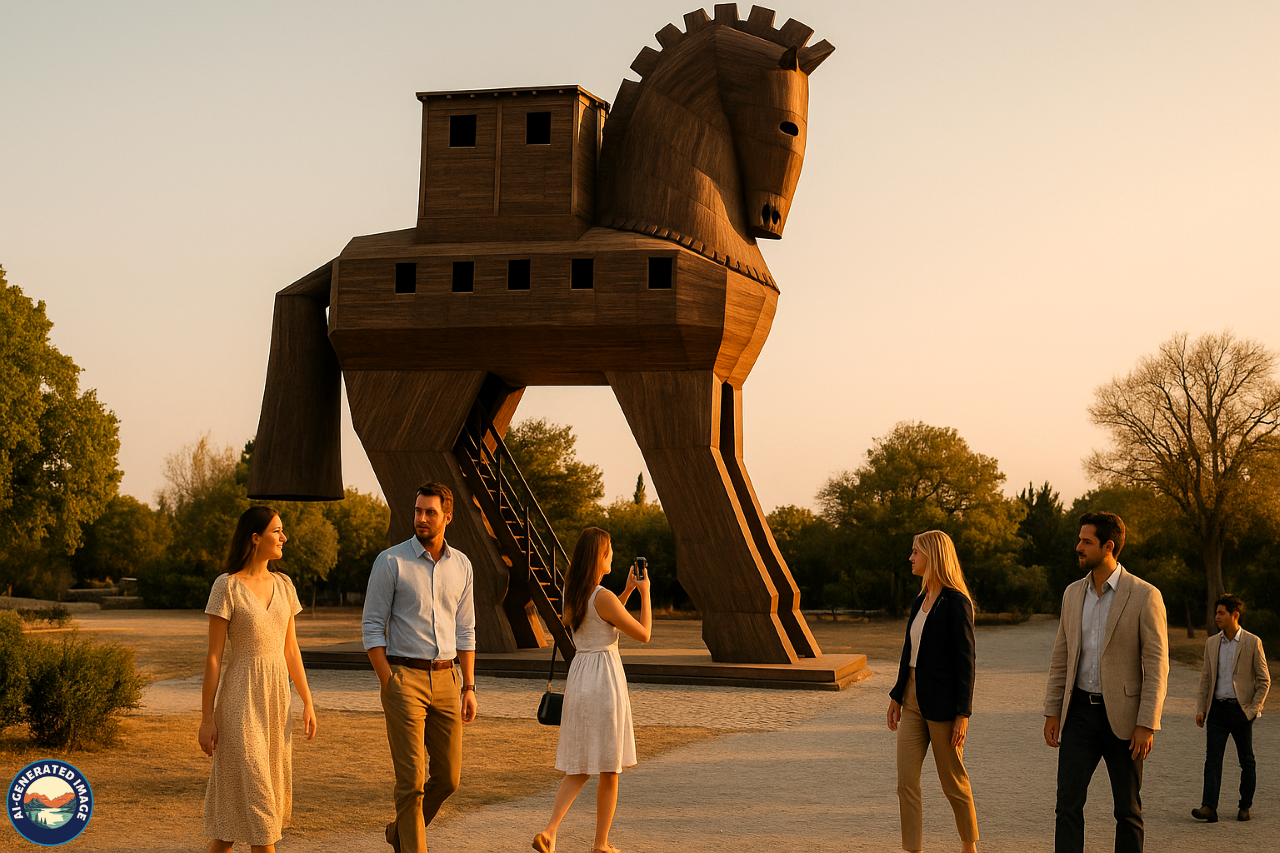
-
Troy Museum:
-
Opened in 2018, it offers an interactive journey through Troy’s rich past with displays of ancient artifacts, maps, and digital reconstructions.
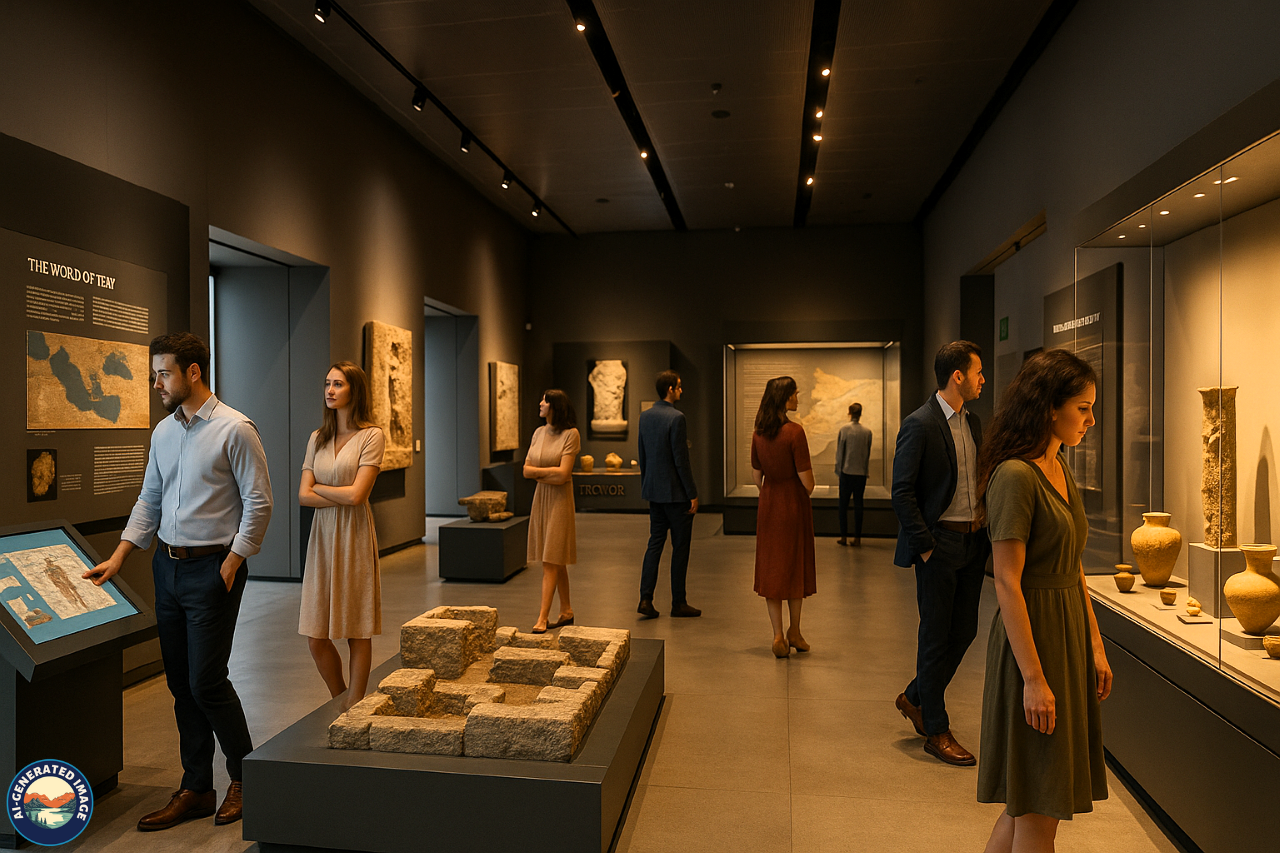
Travel Essentials
-
Location:
-
Close to the modern town of Tevfikiye, easily accessible from Çanakkale.
-
Getting There:
-
Buses and guided tours operate regularly from major Turkish cities.
-
Best Seasons:
-
Visit during spring (April–June) or fall (September–October) for mild weather and fewer crowds.
-
Facilities:
-
On-site cafes, souvenir shops, and guided audio services enhance the visitor experience.
Why Troy Still Matters
Troy represents more than just an archaeological site. It symbolizes the enduring nature of storytelling and the power of belief. From literary symbolism to real-world historical evidence, Troy bridges the chasm between fiction and fact.
Academic Relevance
Troy is a key case study in the relationship between literature and archaeology. It exemplifies how myths can carry kernels of truth and how archaeology can either validate or challenge long-standing narratives.
Cultural and Historical Impact
The Trojan story has shaped how societies view war, loyalty, and destiny. It continues to inform philosophical debates, literary themes, and historical inquiries, reminding us of the universal aspects of human experience.
Troy’s layered history — both literal and metaphorical — reflects the complexities of ancient civilizations and their influence on the modern world.
Conclusion
Troy stands as a monument to the fusion of legend and reality. It invites us to question what we think we know and explore the spaces where imagination and evidence converge. From its storied myth in Homer’s Iliad to the dusty ruins at Hisarlik, Troy offers a timeless narrative of human ambition, folly, and endurance.
Whether you explore it through ancient texts, walk its historic grounds, or marvel at its cultural legacy, Troy continues to inspire and intrigue. It is a city that refused to be forgotten — not by time, not by myth, and not by history.
FAQs
Was Troy a real city or purely mythological?
Troy was long thought to be fictional, but archaeological discoveries at Hisarlik in Turkey confirm the existence of a historical city that aligns with ancient accounts.
Who led the discovery of Troy?
Heinrich Schliemann, a 19th-century German archaeologist, began excavations at Hisarlik and brought Troy into academic focus.
What is the significance of the Trojan Horse?
According to legend, the Greeks used a large wooden horse to conceal soldiers and infiltrate the city. Its existence is unconfirmed, but it symbolizes deception and strategy in warfare.
Can I visit the ruins of Troy today?
Yes. The archaeological site is open to visitors, complete with a museum, preserved ruins, and a reconstructed Trojan Horse.
How many layers of settlement exist at the site?
There are nine major levels, each reflecting different periods of habitation, from the Early Bronze Age to the Roman Empire.
Was the Trojan War real?
While no definitive proof confirms the war as described in Homer’s epics, archaeological evidence of destruction and conflict around 1180 BCE suggests a real historical event may have inspired the myth.

